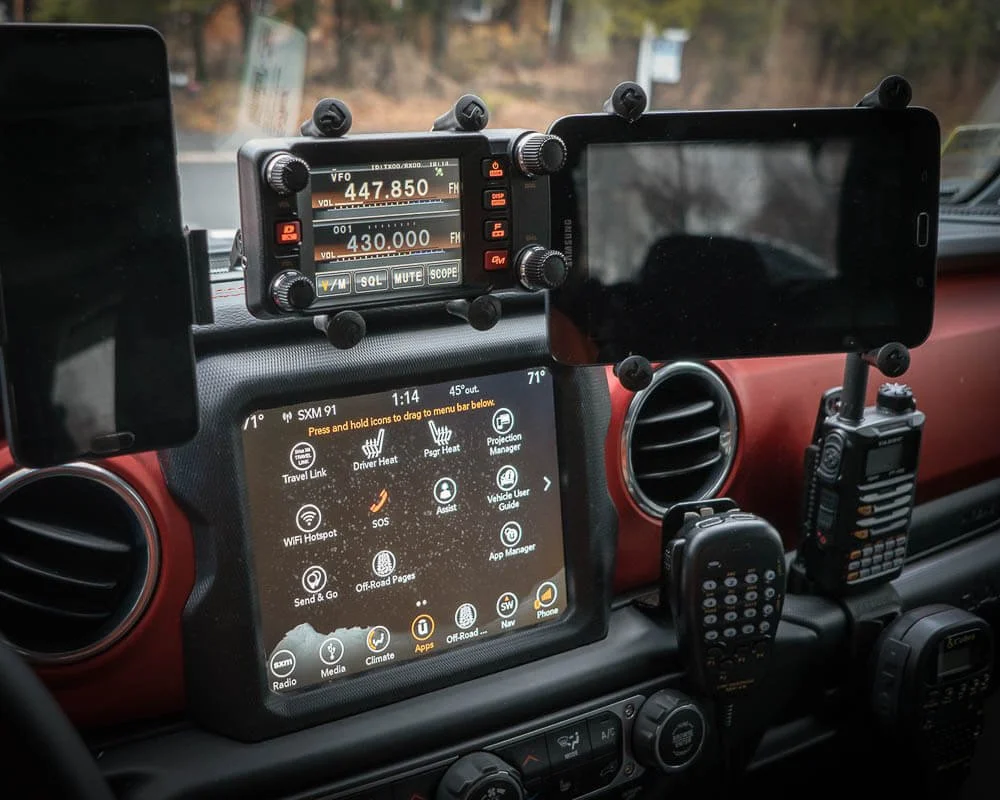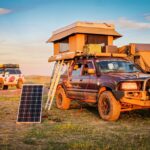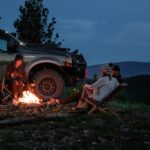Introduction to Overlanding Communication Gear
Overlanding adventures offer unparalleled freedom, allowing travelers to explore remote areas, traverse rugged landscapes, and immerse themselves in nature. However, these remote locations often come with a significant challenge: limited or no cellular connectivity. This is where overlanding communication gear becomes essential. Reliable communication devices are not just conveniences—they are lifelines that ensure safety, navigation, and effective coordination in the wild.
In this guide, we will explore the full spectrum of communication equipment necessary for overlanding, including radios, GPS trackers, and emergency devices. We will highlight the best options available, offer guidance on integration, and provide tips to ensure your journey remains both safe and enjoyable. Whether you are a seasoned overlander, a first-time adventurer, or someone seeking to invest in the right gear, this guide is designed for all.
Radios for Overlanding
Radios are the cornerstone of overland communication, providing reliable vehicle-to-vehicle and group communication without the need for cellular coverage. Depending on your needs and licensing requirements, there are several types of radios to consider.
CB Radios
CB (Citizens Band) radios are a staple of overlanding communication, offering short to medium-range communication suitable for most group travel scenarios.
Advantages:
- Operates on multiple channels with no licensing required
- Effective for vehicle-to-vehicle communication on highways and trails
- Durable and easy to use, even in challenging conditions
Tips:
- Ensure your antenna is properly mounted for optimal range
- Use channel 19 for truck and group communications in most regions
- Maintain basic radio etiquette to avoid interference
GMRS Radios
General Mobile Radio Service (GMRS) radios provide extended range and are ideal for larger overlanding groups. Unlike CB radios, some regions require a license to operate GMRS devices.
Advantages:
- Longer range than CB radios, often exceeding 10 miles in open terrain
- Supports group communication with multiple channels
- Features such as repeater access can enhance coverage
Tips:
- Check your local licensing requirements before use
- Pair with compatible handheld units for flexibility
- Test range in open terrain before your trip
Ham Radios
Ham (amateur) radios offer long-distance communication, ideal for emergency scenarios or overlanding in extremely remote areas. These radios require licensing and some technical knowledge.
Advantages:
- Capable of communicating over hundreds or even thousands of miles
- Access to emergency frequencies for assistance
- Versatile for vehicle, handheld, and base station setups
Tips:
- Enroll in a ham radio licensing course if you plan to use this equipment
- Learn basic Morse code and digital modes for added versatility
- Keep spare batteries and antenna components for emergencies
Keyword Integration: best radios for overlanding
GPS Trackers for Overlanding
Navigating remote terrains safely requires reliable GPS devices. While smartphones can provide some guidance, dedicated GPS trackers offer precision, durability, and functionality that are crucial for serious overlanders.
Importance of GPS in Remote Areas
- Provides accurate positioning in regions without cell towers
- Tracks your route, allowing backtracking if needed
- Monitors speed, altitude, and environmental data for advanced navigation
Popular GPS Features
| Feature | Benefit |
|---|---|
| Offline Maps | Access maps without cellular coverage |
| Waypoints & Routes | Plan stops, campsites, and routes in advance |
| Real-time Tracking | Monitor vehicle positions for group safety |
| Weather Alerts | Receive warnings for adverse conditions |
| Rugged & Waterproof | Operates reliably in extreme conditions |
Tips for Using GPS Trackers
- Preload maps and waypoints for remote routes
- Regularly update firmware to ensure accuracy
- Carry spare batteries or solar chargers for extended trips
Keyword Integration: GPS trackers
Emergency Communication Devices
Even with radios and GPS, overlanders must prepare for emergencies. Devices like satellite phones, personal locator beacons (PLBs), and satellite messengers ensure help is always within reach.
Satellite Phones
Satellite phones provide global connectivity, allowing communication even in areas with no cellular coverage.
Advantages:
- Works virtually anywhere on the planet
- Critical for emergencies, medical needs, or coordinating rescues
- Some models include SMS and email capabilities
Considerations:
- Higher initial cost and per-minute calling fees
- Require line-of-sight to the sky for optimal signal
- Keep a solar charger or spare battery for extended trips
Keyword Integration: satellite phones overland
Personal Locator Beacons (PLBs)
PLBs are simple, single-purpose devices designed to alert emergency responders to your exact location.
Advantages:
- No subscription fees
- Activation triggers a rescue response from satellite systems
- Lightweight, portable, and reliable in extreme conditions
Tips:
- Familiarize yourself with activation procedures before departure
- Test your PLB periodically (some models allow self-tests)
- Always carry it accessible on your body or vehicle
Satellite Messengers
Satellite messengers combine the functionality of PLBs with two-way messaging and tracking capabilities, offering more versatility than a PLB alone.
Advantages:
- Send and receive messages in remote areas
- Share location with family or group members
- Some models include SOS emergency alerts and tracking
Popular Models:
| Device | Key Feature | Battery Life |
|---|---|---|
| Garmin inReach Explorer+ | Two-way texting & SOS alerts | Up to 100 hours |
| SPOT X | GPS tracking & satellite messaging | Up to 10 days |
| Somewear Global Hotspot | Global texting & voice messaging | Up to 10 days |
Keyword Integration: emergency comms overland
Integrating Communication Devices for Optimal Coverage
A single communication device may not be sufficient for comprehensive coverage. Integrating radios, GPS, and emergency devices creates redundancy and maximizes safety.
Tips for Integration:
- Establish a communication hierarchy (primary, secondary, emergency)
- Test all devices together before leaving home base
- Include portable power sources, extra antennas, and charging options
Budgeting for Communication Gear
Investing in overlanding communication gear is a balance between quality, durability, and affordability.
Cost Considerations:
- Radios: $100–$800 depending on type and features
- GPS Trackers: $150–$600 with mapping and tracking capabilities
- Satellite Phones: $500–$1,500 plus airtime costs
- PLBs: $200–$400
- Satellite Messengers: $250–$500 with subscription plans
Tips:
- Consider long-term use and resale value
- Prioritize life-saving devices over luxury features
- Evaluate bundled packages for cost savings
Keyword Integration: overland communication equipment
Legal Considerations and Licensing
Understanding legal requirements is crucial when using communication devices across borders.
Key Points:
- GMRS and Ham radios may require licenses
- Satellite phones generally have no restrictions, but local laws vary
- International travel may require registration or permits for certain radios
- Always adhere to frequency regulations to avoid fines
FAQs (People Also Ask)
1. What is the best radio for overlanding?
CB and GMRS radios are most common, while ham radios provide long-range options for emergency situations.
2. Do I need a license for GMRS radios?
Yes, a license is required in many regions, though it is generally easy to obtain.
3. How do satellite phones work in remote areas?
They connect directly to satellites, bypassing cellular networks, ensuring communication in virtually any location.
4. What is the difference between a PLB and a satellite messenger?
PLBs are single-purpose emergency devices, while satellite messengers offer two-way messaging and tracking.
5. Can I use my cell phone for overlanding communication?
Cell phones are useful in areas with coverage but are unreliable in remote regions. Dedicated radios and satellite devices are recommended.
Conclusion & Call-to-Action
Reliable communication is a cornerstone of safe and successful overlanding. From radios for vehicle coordination to GPS trackers for navigation, and satellite devices for emergencies, investing in the right gear is essential for every overlander.
Preparation, testing, and understanding device capabilities can prevent accidents, facilitate rescue operations, and provide peace of mind during extended adventures.
Call-to-Action: Equip yourself with the best overlanding communication gear today! Consult Just Overland for expert advice on selecting, integrating, and using communication devices for your next off-road adventure. Ensure your journey is both safe and unforgettable.








